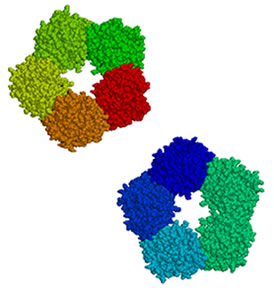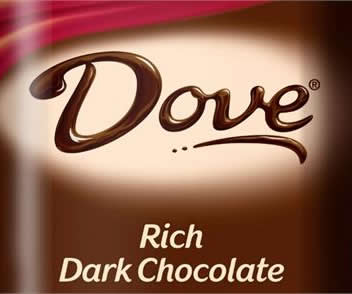 The Journal of Nutrition published a study on chocolate this month that was immediately picked up by the press. The headline of choice was “Dark Chocolate Prevents Heart Disease.” Slightly more discriminating publications were willing to say “Dark Chocolate May Prevent Heart Disease.” A marginally more accurate but still flawed headline: “Dark chocolate linked to lower risk of heart disease.”
The Journal of Nutrition published a study on chocolate this month that was immediately picked up by the press. The headline of choice was “Dark Chocolate Prevents Heart Disease.” Slightly more discriminating publications were willing to say “Dark Chocolate May Prevent Heart Disease.” A marginally more accurate but still flawed headline: “Dark chocolate linked to lower risk of heart disease.”
The title of the original journal article is “Regular Consumption of Dark Chocolate Is Associated with Low Serum Concentrations of C-Reactive Protein in a Healthy Italian Population.” OK. Medical journalists need to translate dense, academic prose into everyday language. But there really is a big difference between saying you can prevent heart disease by eating chocolate and saying there’s a correlation between chocolate consumption and a medical marker associated with the risk of heart disease.
The first implies a cause and effect relationship. With the second, you have no way of knowing if the correlation is a coincidence and some other factor actually explains what you’re observing. You need to look at more than one study and the right type of study. Jumping to the headline “Chocolate prevents heart disease” is simply a quick way to get attention. That’s why you need to beware of health news.
C-reactive protein levels
 As the NHS analysis of the news coverage of this story points out, the study had nothing to do with heart disease. The Moli-sani project is one of those population studies where they ask people what they’ve eaten over the past year. If a project continues over many years (a longitudinal study), you can look for a correlation between chocolate or alcohol consumption and the incidence of heart attacks. But that’s not what this study was about. After asking people how much dark chocolate they’d eaten in the last year, the researchers did a blood test to measure their C-reactive protein (CRP) levels.
As the NHS analysis of the news coverage of this story points out, the study had nothing to do with heart disease. The Moli-sani project is one of those population studies where they ask people what they’ve eaten over the past year. If a project continues over many years (a longitudinal study), you can look for a correlation between chocolate or alcohol consumption and the incidence of heart attacks. But that’s not what this study was about. After asking people how much dark chocolate they’d eaten in the last year, the researchers did a blood test to measure their C-reactive protein (CRP) levels.
High levels of CRP are associated with inflammation somewhere in the body. Inflammation is thought to damage the arteries. Heart disease involves damage to the arteries. So elevated CRP levels are used as a very rough indication of heart disease risk. Since many things can cause a rise in CRP levels, it is not considered a very specific indicator of heart disease risk. Plus, risk is not the same as a disease event, such as a heart attack. You can have cardiovascular disease and not get a heart attack.
The Moli-sani study
The Moli-sani study found a correlation between dark chocolate consumption and CRP levels. 14% of people who ate dark chocolate had high CRP levels compared to 19% of those who did not eat dark chocolate. The researchers then speculated, based on another study, that this difference in CRP levels translates into a 26% reduction in cardiovascular disease risk for men and a 33% reduction for women. This is what got picked up in the press as: “33% fewer heart attacks for women who eat dark chocolate.”
The Moli-sani project is a cross sectional study. Researchers take a snapshot of a population segment at one point in time. It’s difficult to assess causal relationships (eating chocolate prevents heart attacks) from a cross sectional study because there are so many unknown variables. The researchers did attempt to adjust their analysis for factors other than chocolate – physical activity, age, sex, and other dietary habits. But there’s no way to know whether something the researchers didn’t measure actually accounted for the results. Maybe people who eat chocolate get more pleasure out of life. ![]()
Press coverage
 Another objection I have to the press coverage of this study is that several stories described this as “one of the largest epidemiological studies ever conducted in Europe.” It’s true that the Moli-sani project aims to enroll 25,000 subjects, but the number of people who regularly ate dark chocolate was only 824.
Another objection I have to the press coverage of this study is that several stories described this as “one of the largest epidemiological studies ever conducted in Europe.” It’s true that the Moli-sani project aims to enroll 25,000 subjects, but the number of people who regularly ate dark chocolate was only 824.
Most of the stories were virtuous in reporting how little chocolate you should actually eat. Positive results – fewer people with high CRP levels – were only found in those who ate small amounts of dark chocolate – less than 6.7 grams per day. One piece of Dove Dark (about one square inch) is 7.38 g. A Special Dark Hershey bar is 41 g. It can be divided into 16 very small pieces. Each one would be 2.56 g. So if you ate three of those, you would be over the limit by one gram. When you exceed the daily limit, the beneficial effect disappears, that is, CRP levels actually increase.
The bottom line from Behind the Headlines: “There is strong evidence that a healthy balanced diet and regular exercise are linked to lower CRP levels and a reduced risk of cardiovascular disease. Eating chocolate should not be considered comparable to the health benefits of these.”
Disclosure: I eat chocolate every day, and not for the health benefits. I became allergic to chocolate in the eighth grade after eating too much of the batter for chocolate chip cookies. (All I did, really, was lick the bowl, something I gather children don’t do anymore since raw eggs are considered unsafe.)
I had a severe allergic reaction and continued to be allergic to chocolate until 2001. At that time, I was taking a class from a neurolinguistic programming (NLP) expert who specialized in the use of NLP for medical conditions. He had a procedure for eliminating allergies. After the first two sessions (from fellow students), I tested my allergy by eating chocolate and still got swollen, sensitive hands and lips. But the third session did the trick. I’ve been eating chocolate ever since, making up for lost time. In moderation, of course.
Related posts:
Chocolate has antioxidants but is that a good thing?
Sources:
(Hover over book titles for more info. Links will open in a separate window or tab.)
Behind the Headlines: Chocolate and heart disease
Regular Consumption of Dark Chocolate Is Associated with Low Serum Concentrations of C-Reactive Protein in a Healthy Italian Population
C-reactive protein. (Wikipedia)
Dark Chocolate Cuts Average Heart Disease Risk One-Fourth to One-Third, Large-Population Study Reports
The Moli-sani Project


Dark chocolate is especially good. I saw that on Bill Nye the science guy the other night.
Yes, dark chocolate. Some companies now feature the percentage of dark chocolate on the package. The ingredient you want to maximize is flavanols, an antioxidant found in red wine, tea, and chocolate. Dark chocolate has a much higher level of flavanols than milk chocolate. When the packaging says 56 or 87 percent dark chocolate, however, that’s the percentage of dark chocolate as an ingredient, not the level of flavanols, which can be destroyed by the manufacturing process. Mars, the manufacturer of Dove Dark, gets publicity for its patented and proprietary process of manufacturing cocoa beans, a process designed to maximize the flavanol level. (Read more here.)
A study funded by Hershey (who, of course, had an interest in the outcome) found the highest levels of flavanols in natural cocoa powder, followed by unsweetened baking chocolate, dark chocolate, milk chocolate, and chocolate syrup. (Read more here.) Assuming it’s true that unsweetened cocoa has even more flavanols than dark chocolate, it’s a good way to enjoy chocolate without the extra calories that sugar and fat add to most chocolate products. A tablespoon has only 15 calories. You can use it on ricotta cheese with a little almond or vanilla flavoring or a few drops of stevia. It’s very satisfying!
Thanks for reading and posting a comment.
Jan
I really appreciate the efforts you have made for this article.Thanks for sharing your experiences regarding this trial.The candy industry keeps trying to convince us that chocolate is a health food by sponsoring and publicizing studies. One of the latest, in the medical journal Hypertension (July, 2005), shows that eating dark chocolate lowers high blood pressure. Cocoa beans are loaded with flavonoids, the antioxidants found in all fruits, vegetables whole grains, beans and other seeds, and antioxidants do lower blood pressure.The type of chocolate is also crucial as some contain more of the key ingredient, flavonoids.
Thanks for your comment, Jessica. You’re absolutely right about the flavonoids. I think the problems we all have with knowing what’s healthy to eat come not only from the food industry, but from the media. Any small, insignificant, even unscientific study that can be used to promote chocolate will be covered in the news because there’s an audience for that story. We all need to become wise and wary news consumers, just as we’ve learned to be skeptical of advertisements.